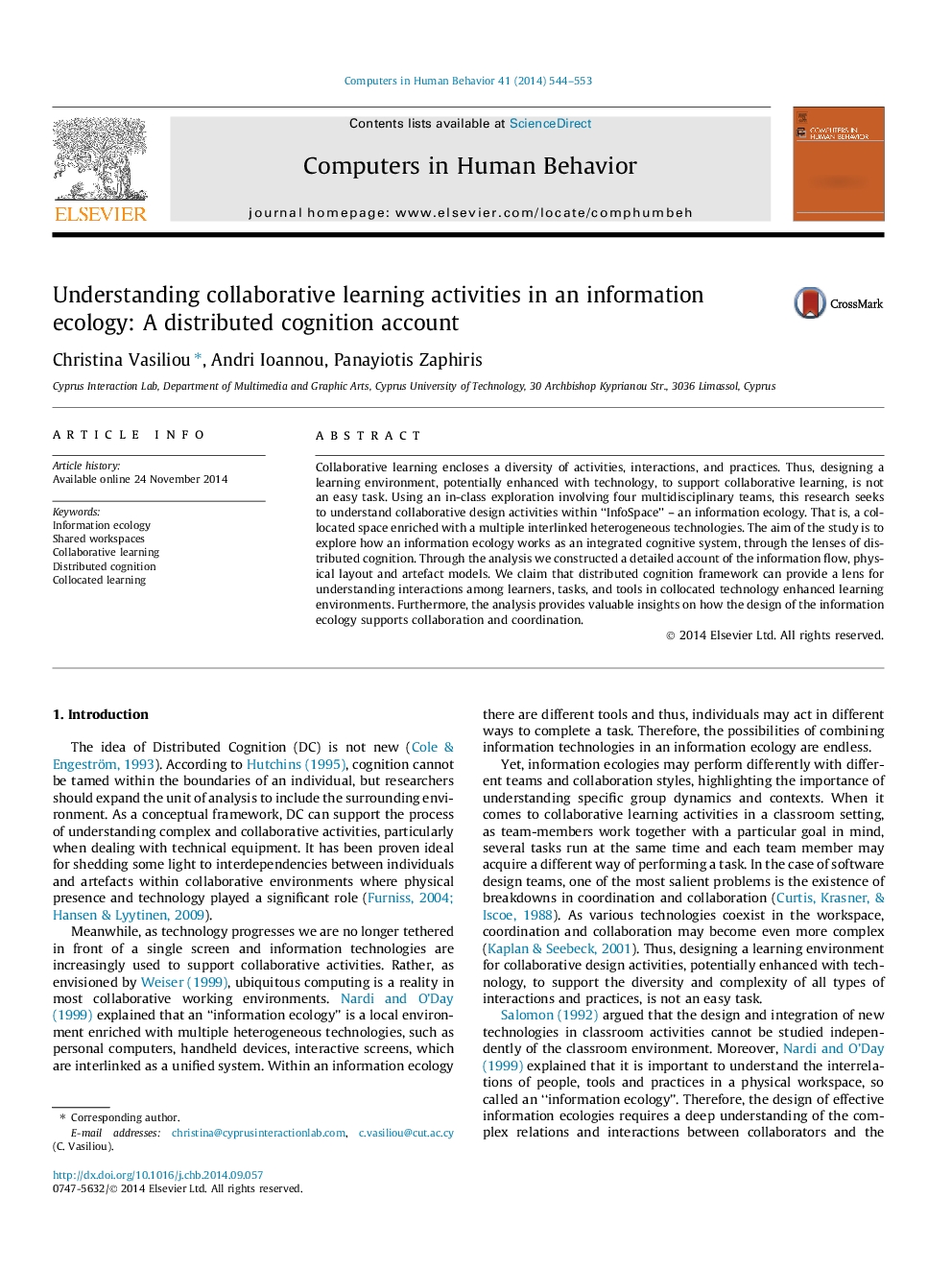| Article ID | Journal | Published Year | Pages | File Type |
|---|---|---|---|---|
| 350427 | Computers in Human Behavior | 2014 | 10 Pages |
•Handheld devices, social networks and projections formed an information ecology.•Combine physical and digital tools to support collaborative design activities.•Understand interactions among learners, tasks and tools via distributed cognition.•Use DICOT to build a detailed account of activities in the information ecology.•Reveal practical insights on the effectiveness of the information ecology.
Collaborative learning encloses a diversity of activities, interactions, and practices. Thus, designing a learning environment, potentially enhanced with technology, to support collaborative learning, is not an easy task. Using an in-class exploration involving four multidisciplinary teams, this research seeks to understand collaborative design activities within “InfoSpace” – an information ecology. That is, a collocated space enriched with a multiple interlinked heterogeneous technologies. The aim of the study is to explore how an information ecology works as an integrated cognitive system, through the lenses of distributed cognition. Through the analysis we constructed a detailed account of the information flow, physical layout and artefact models. We claim that distributed cognition framework can provide a lens for understanding interactions among learners, tasks, and tools in collocated technology enhanced learning environments. Furthermore, the analysis provides valuable insights on how the design of the information ecology supports collaboration and coordination.
